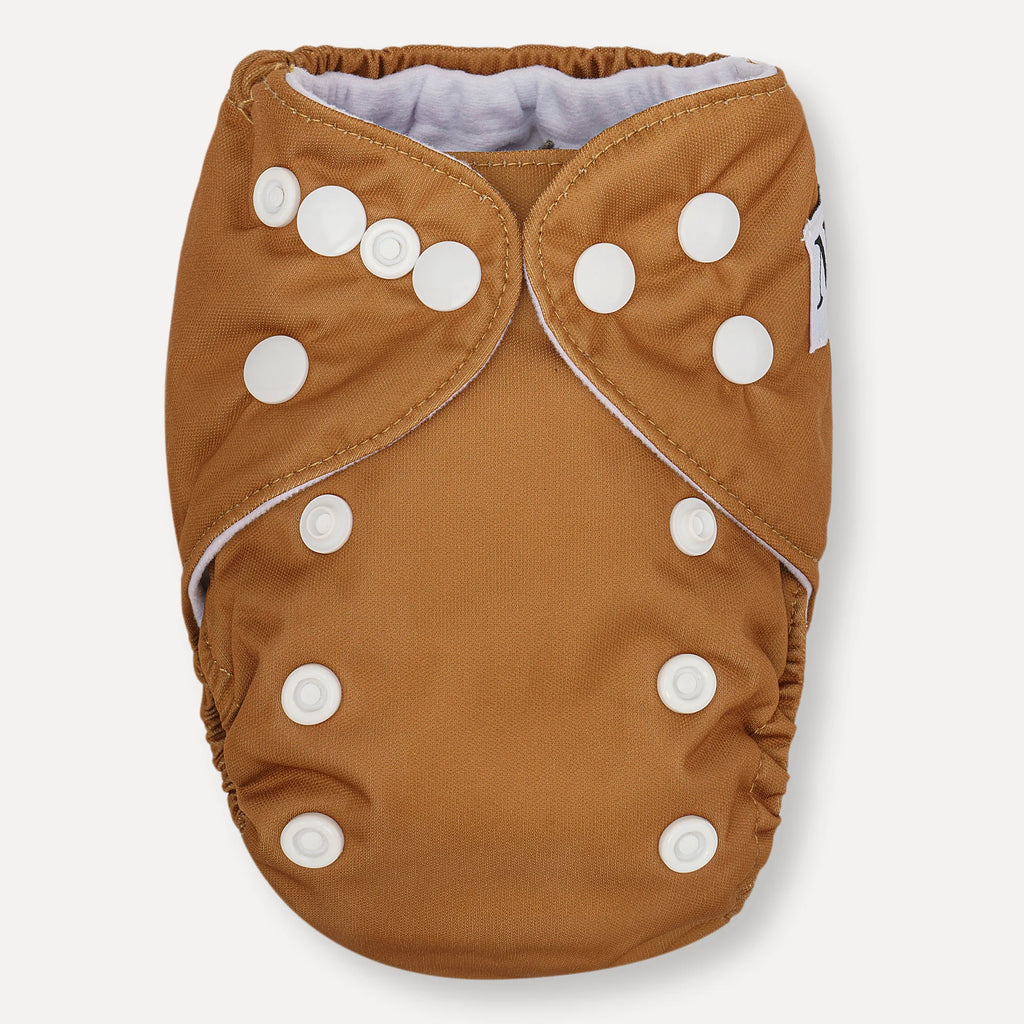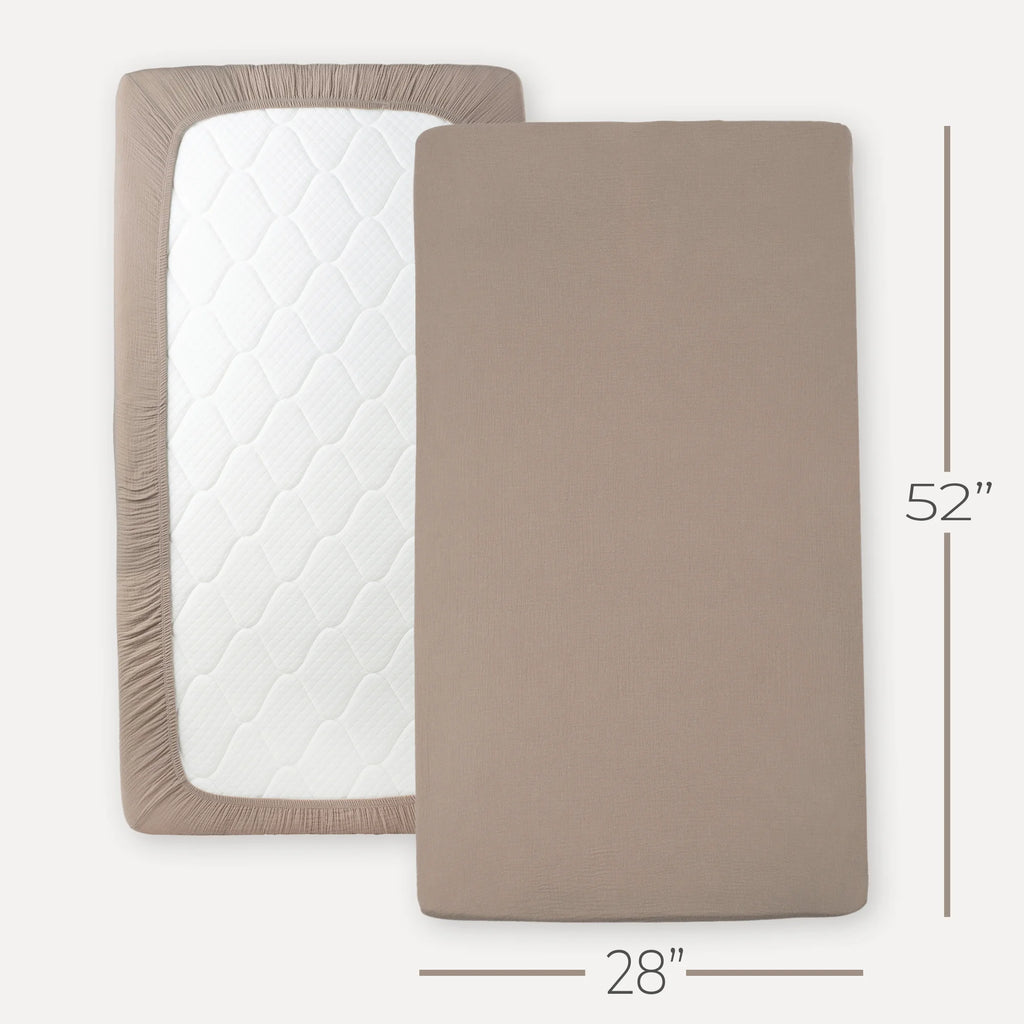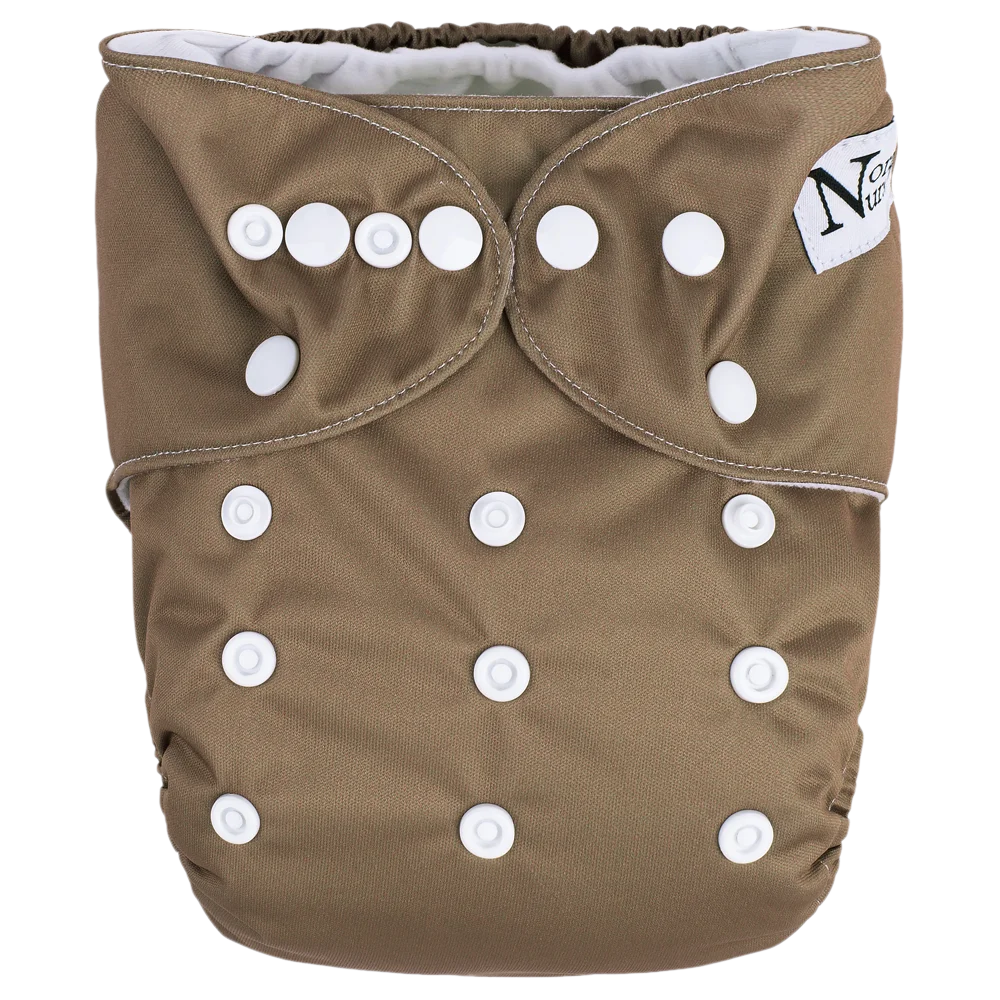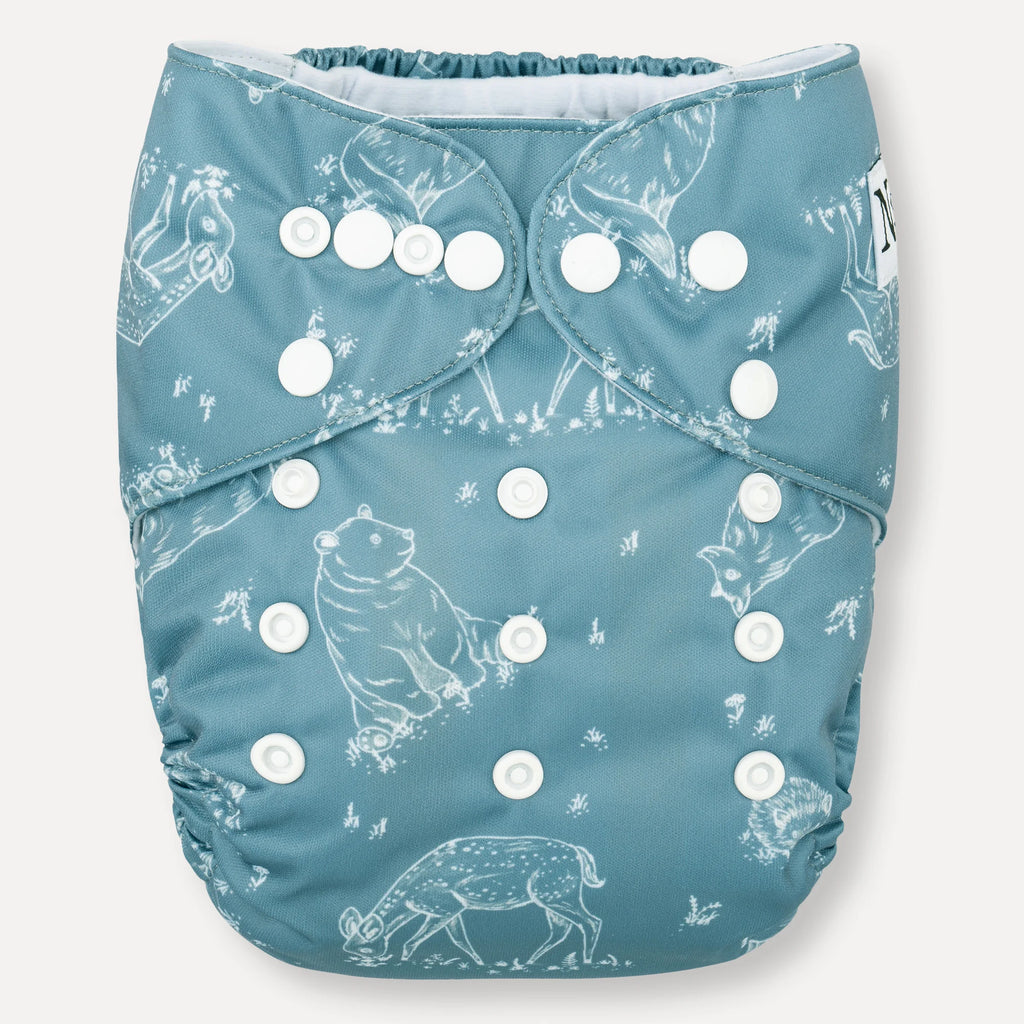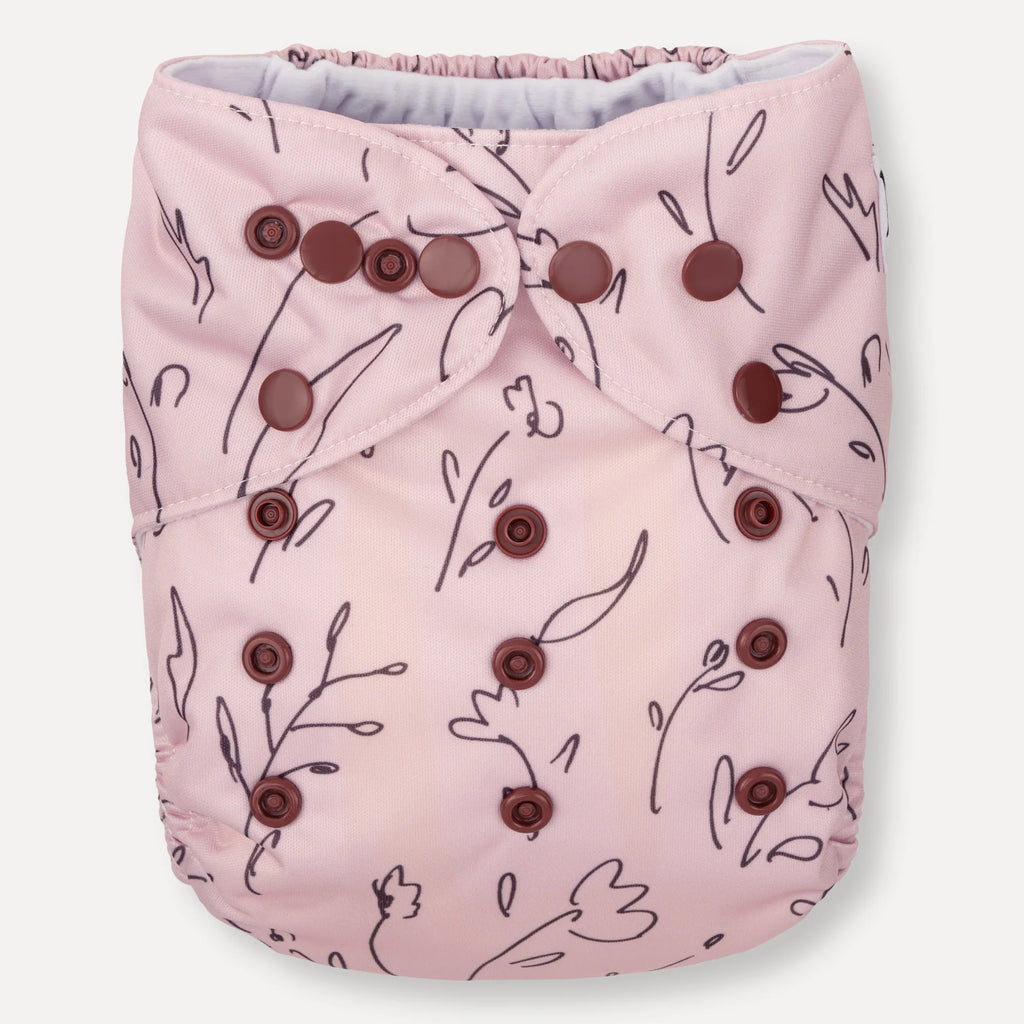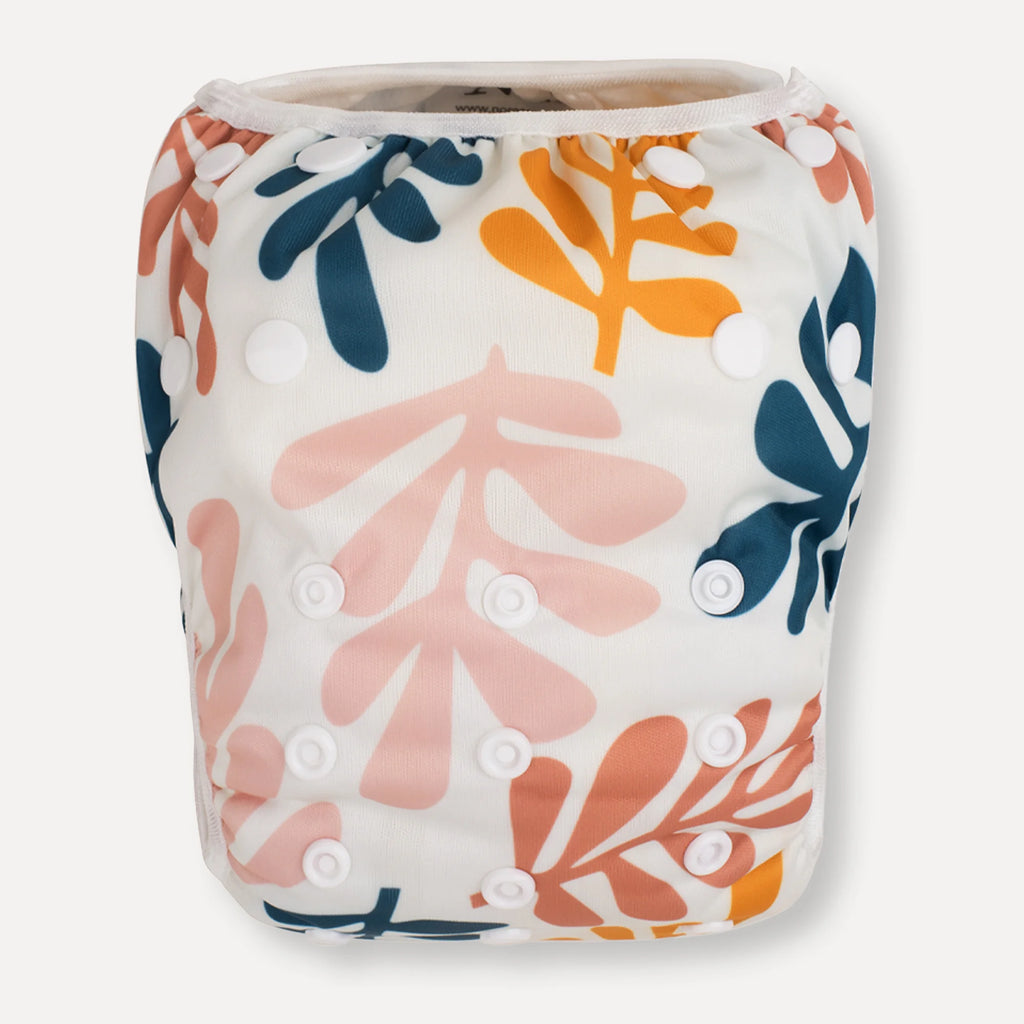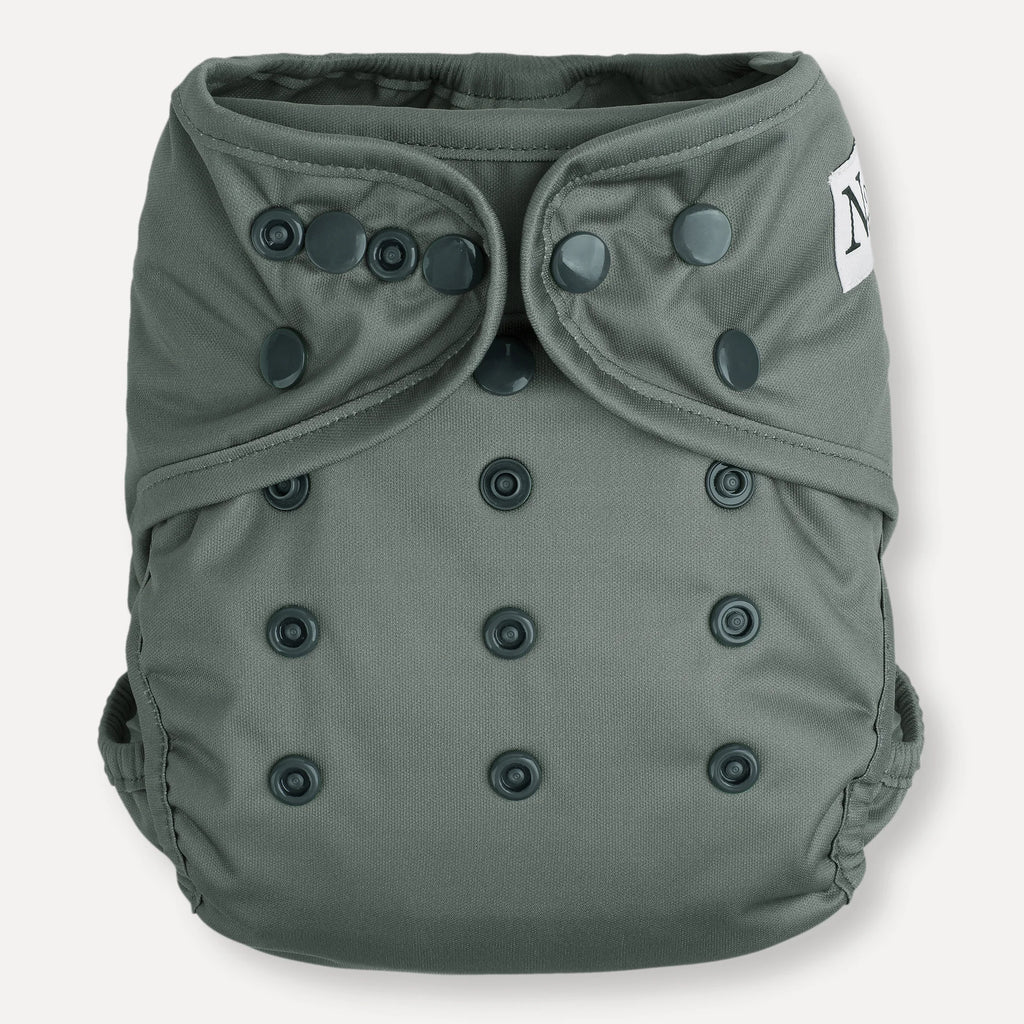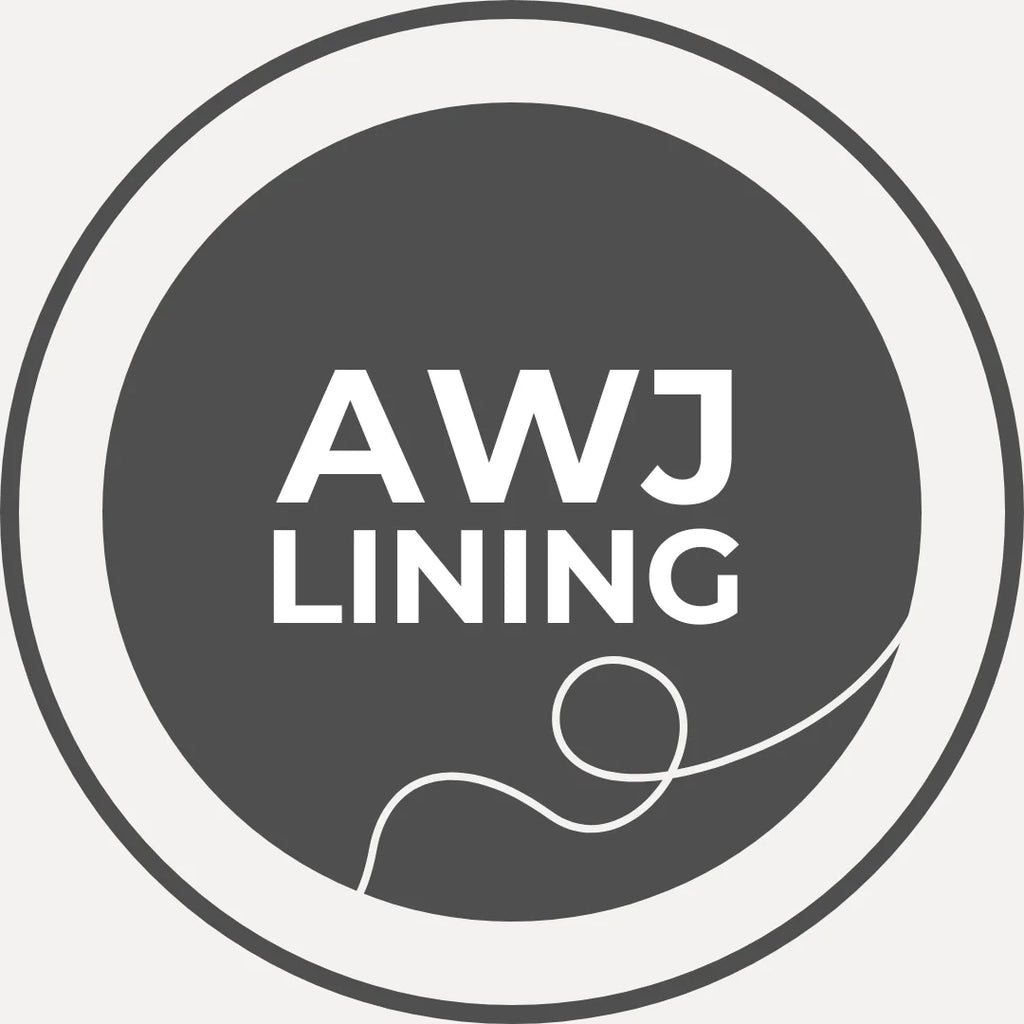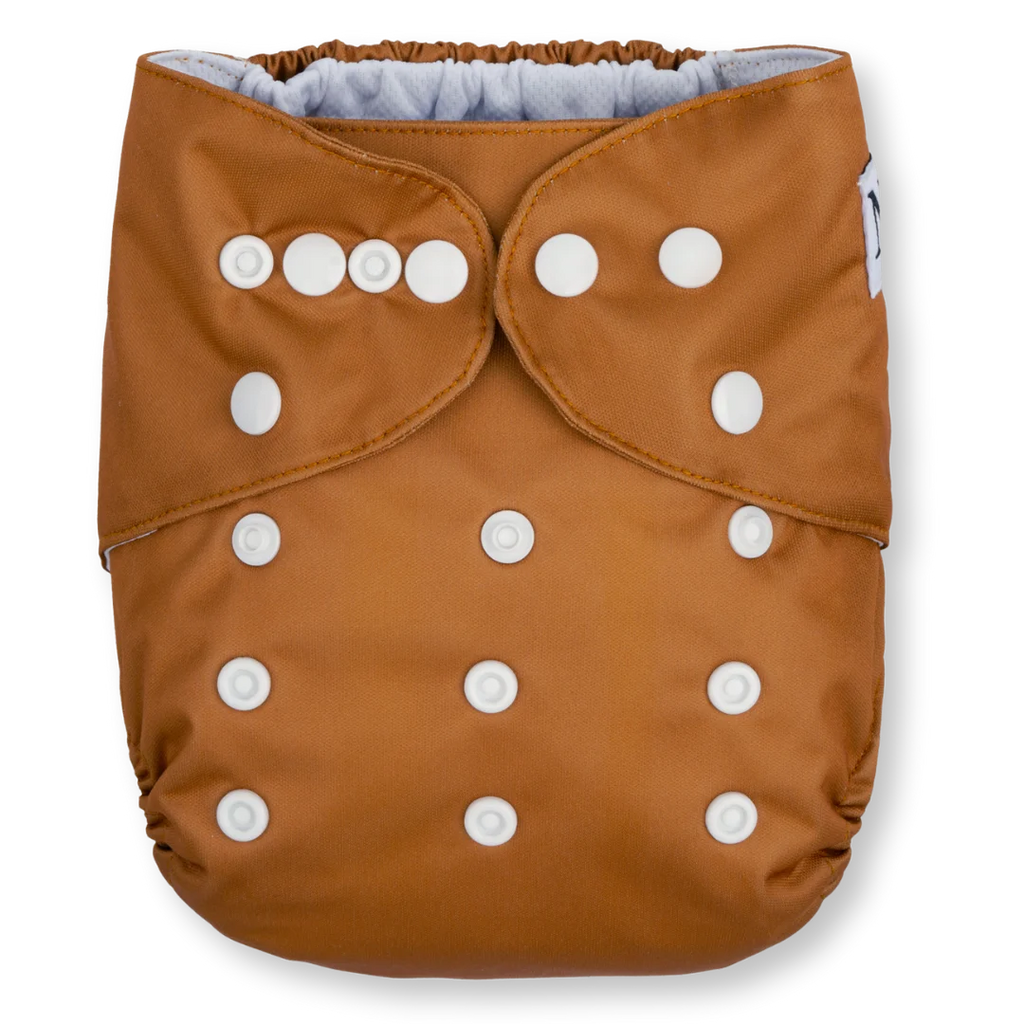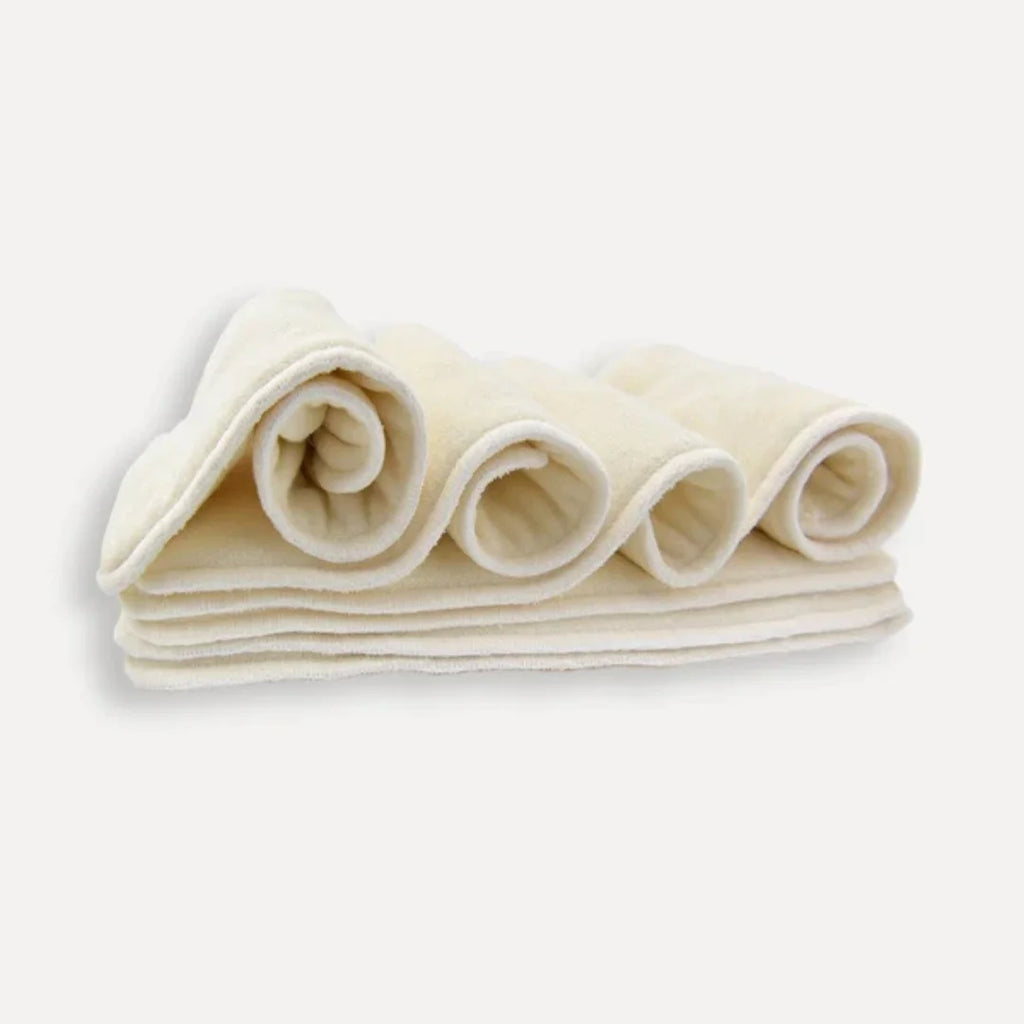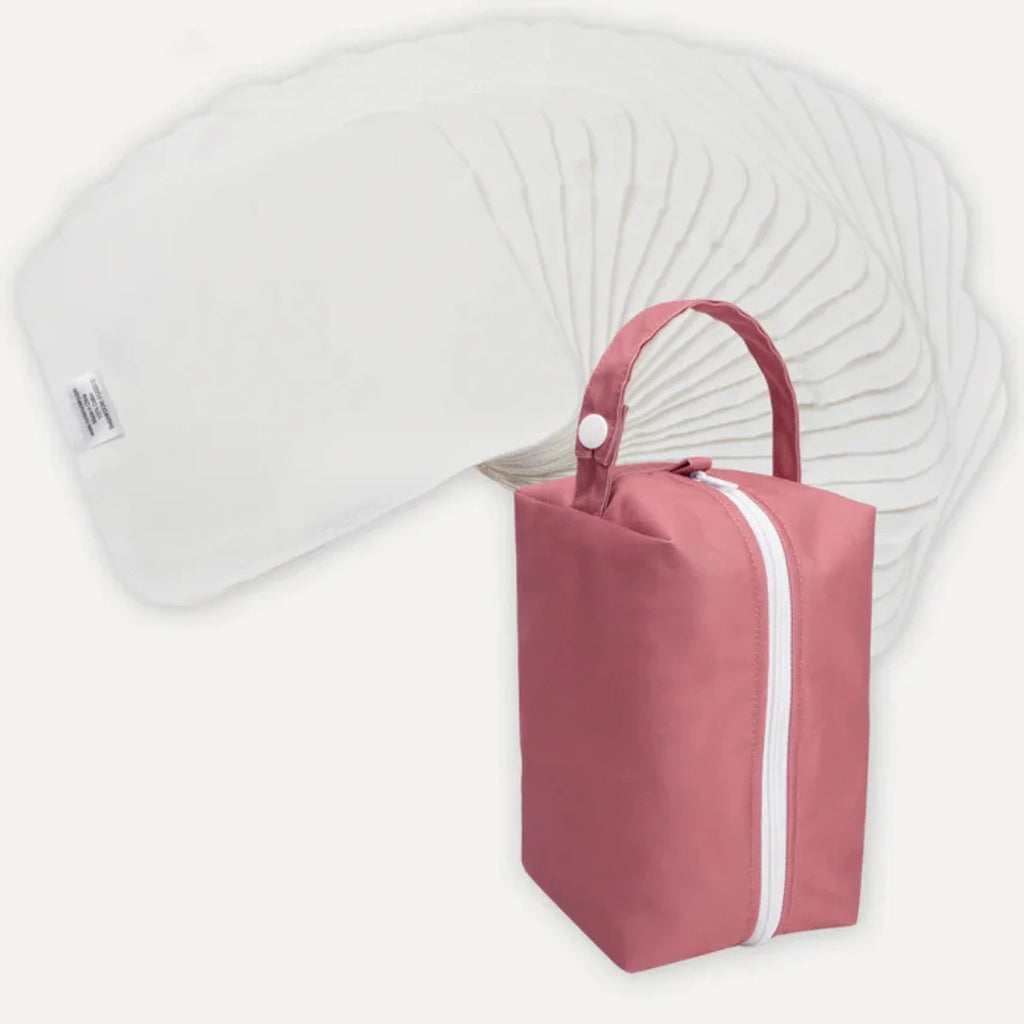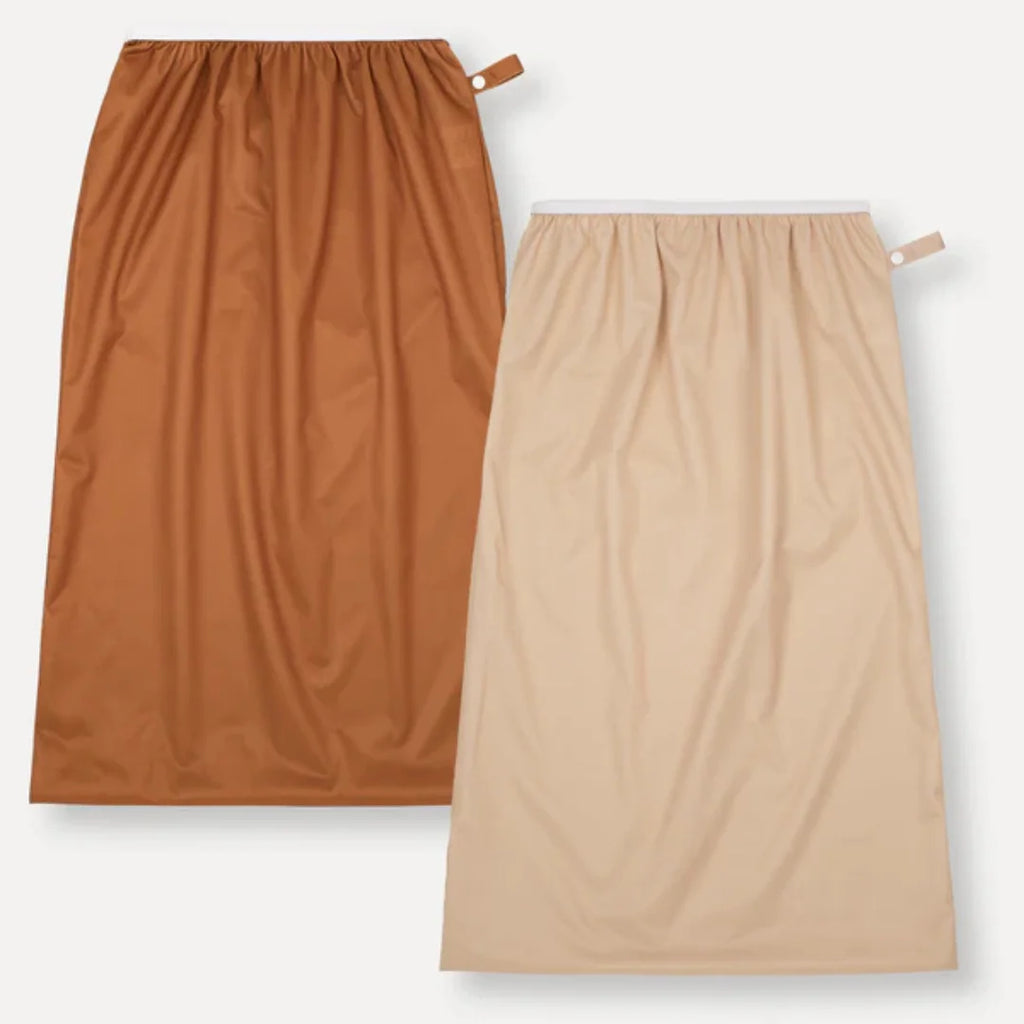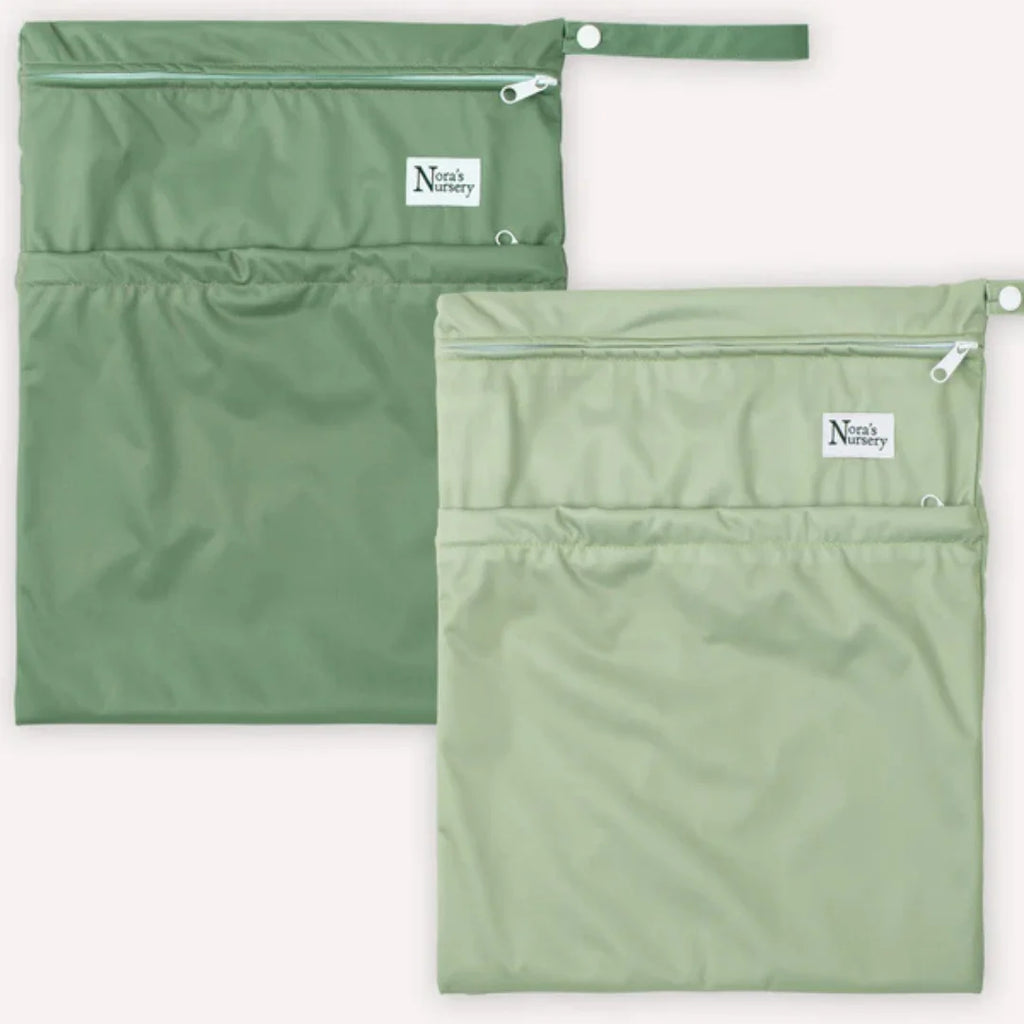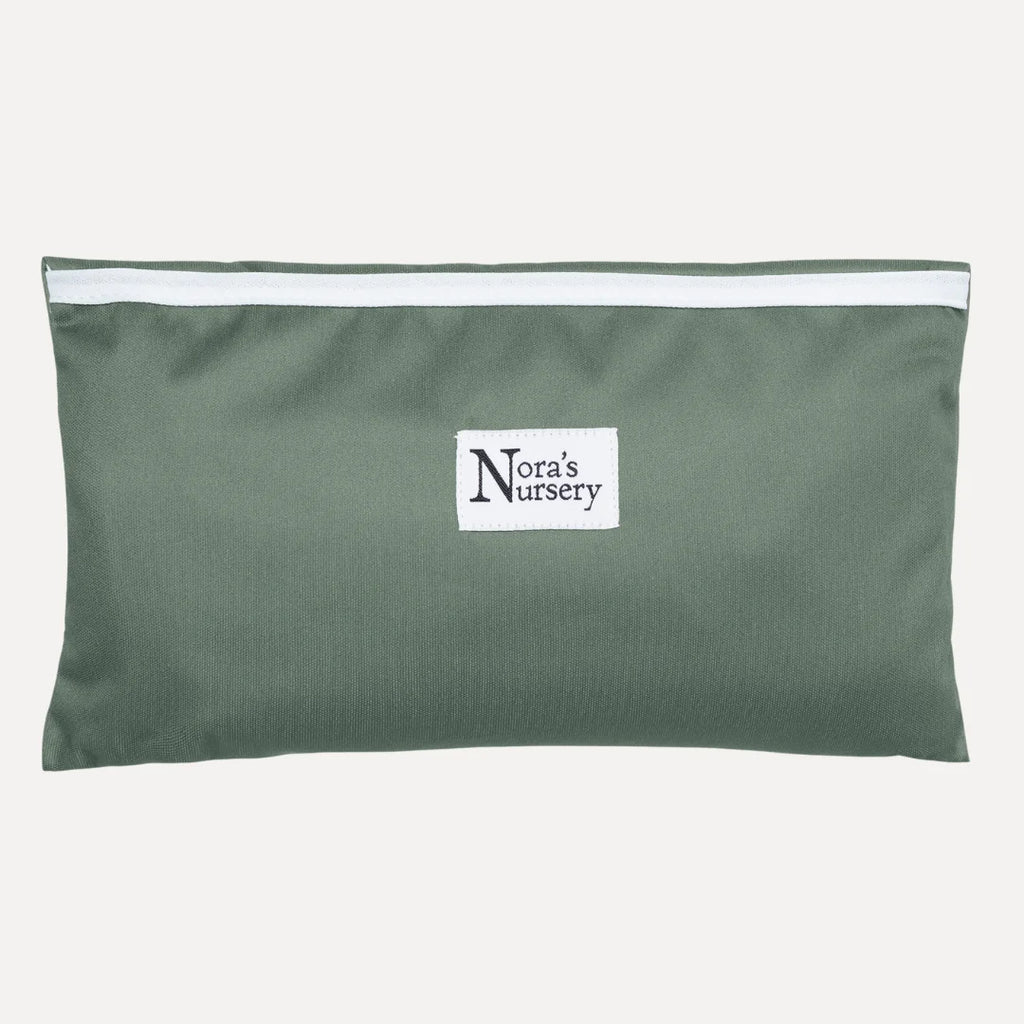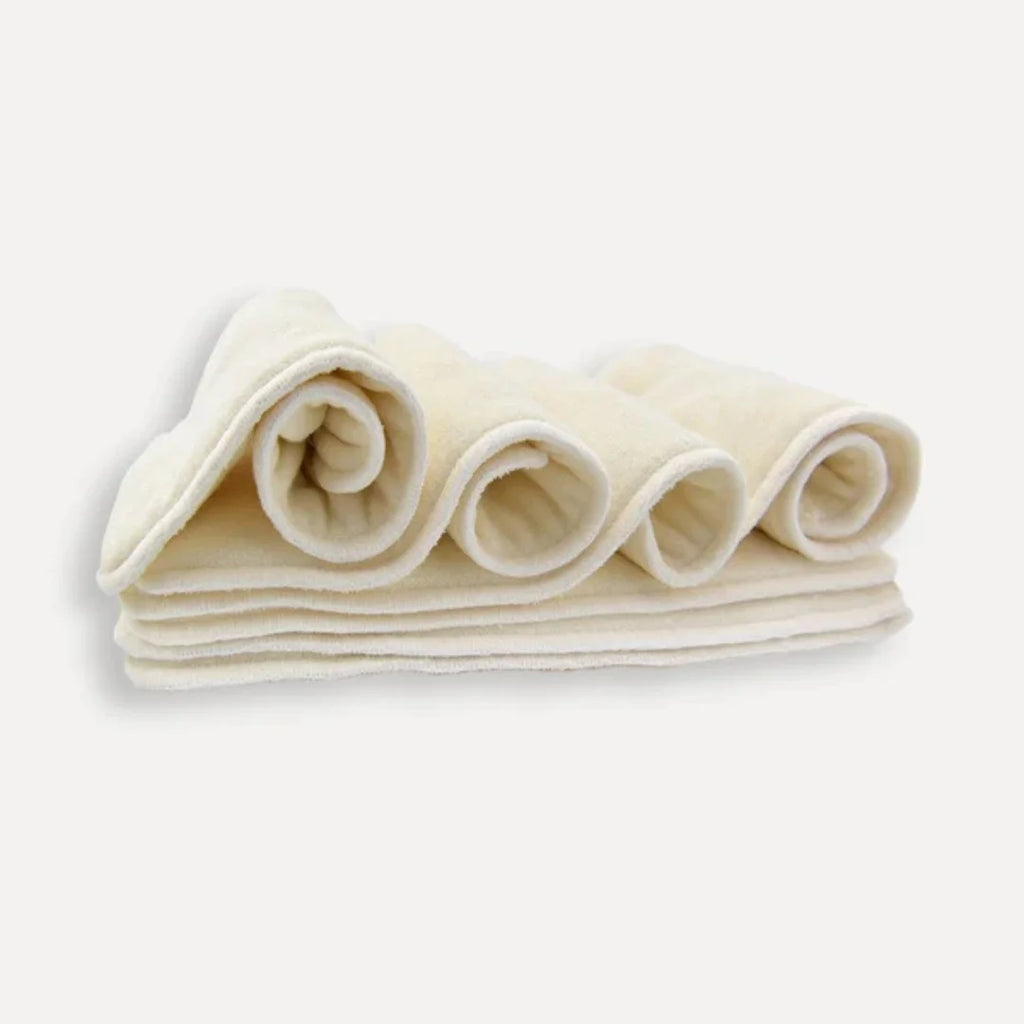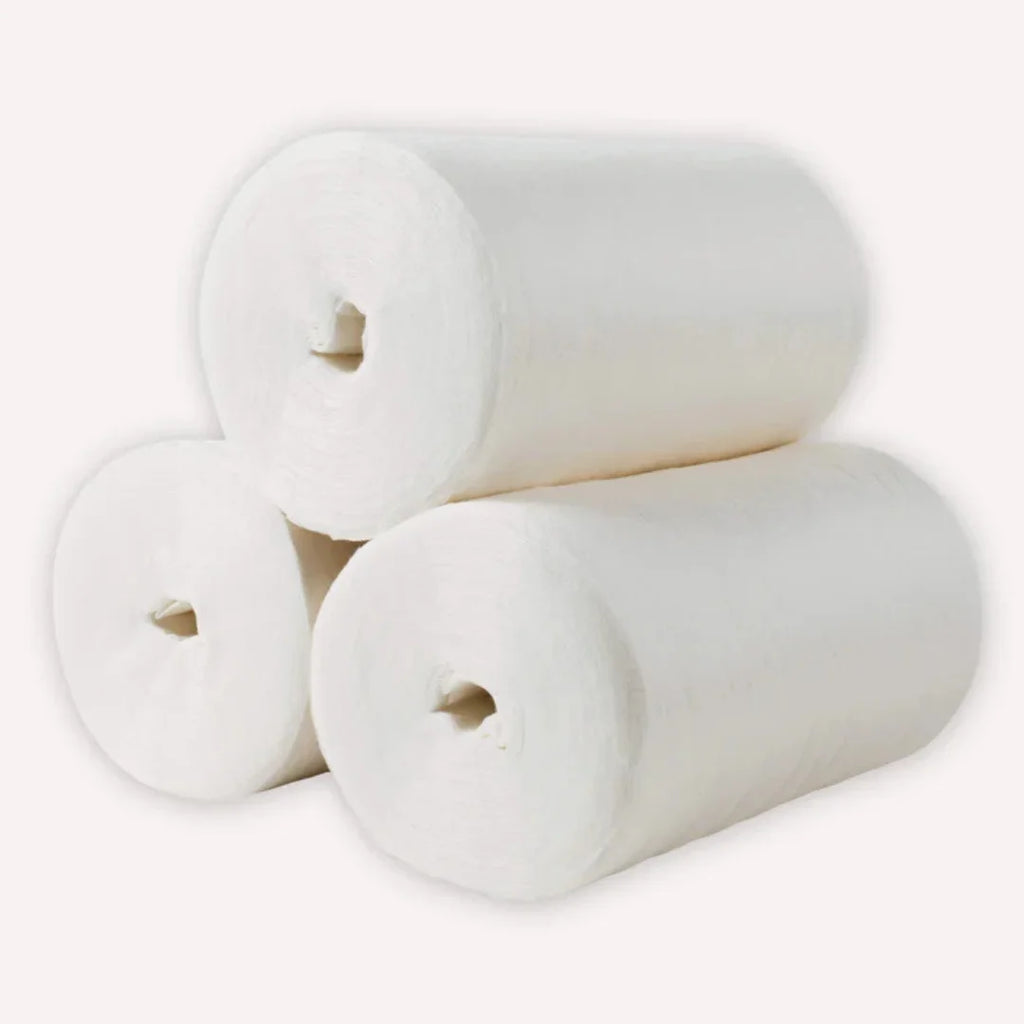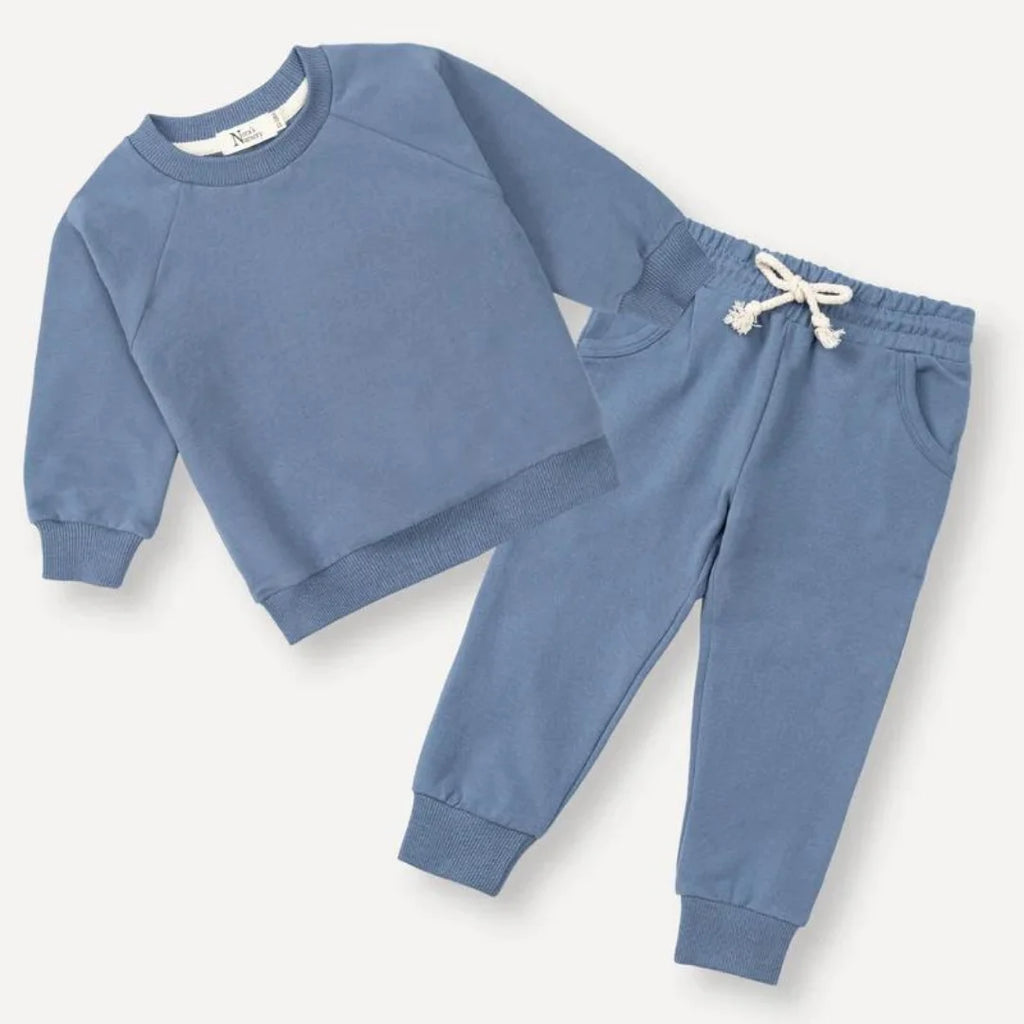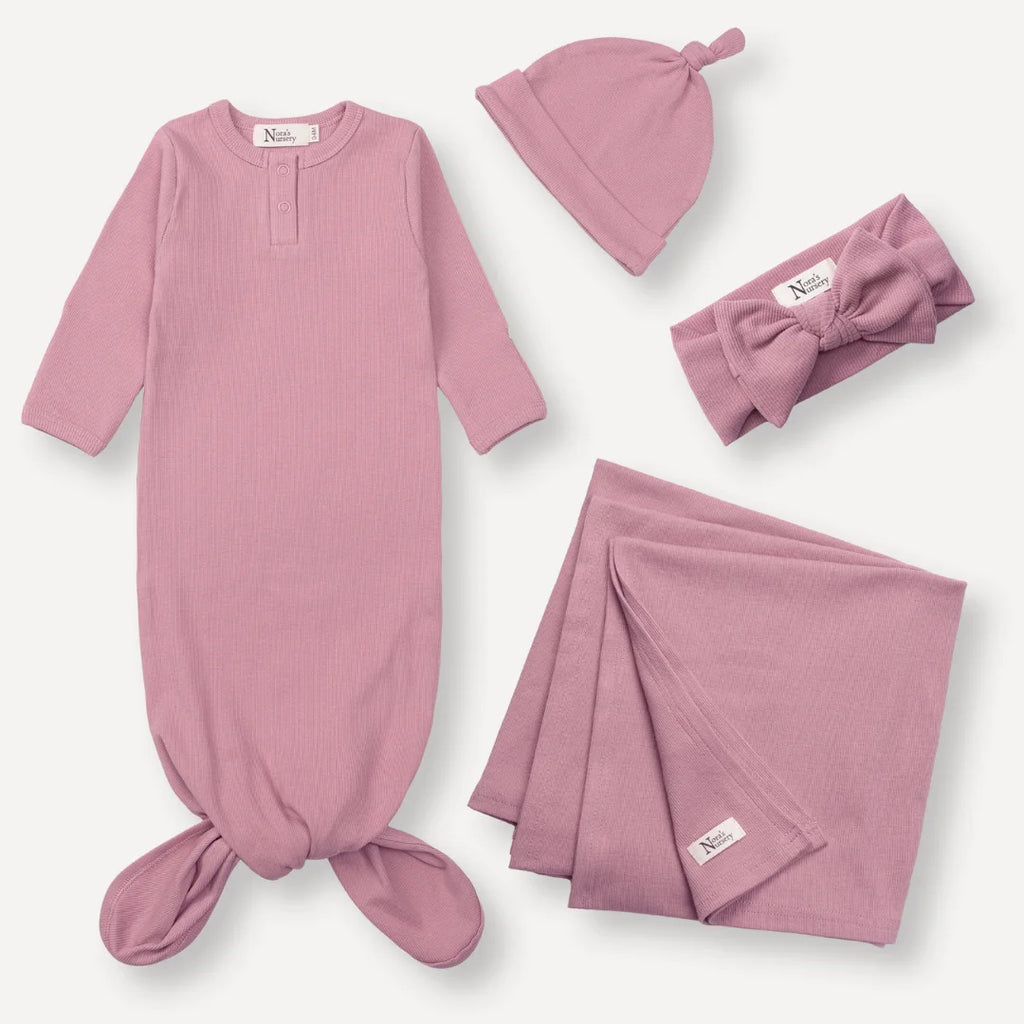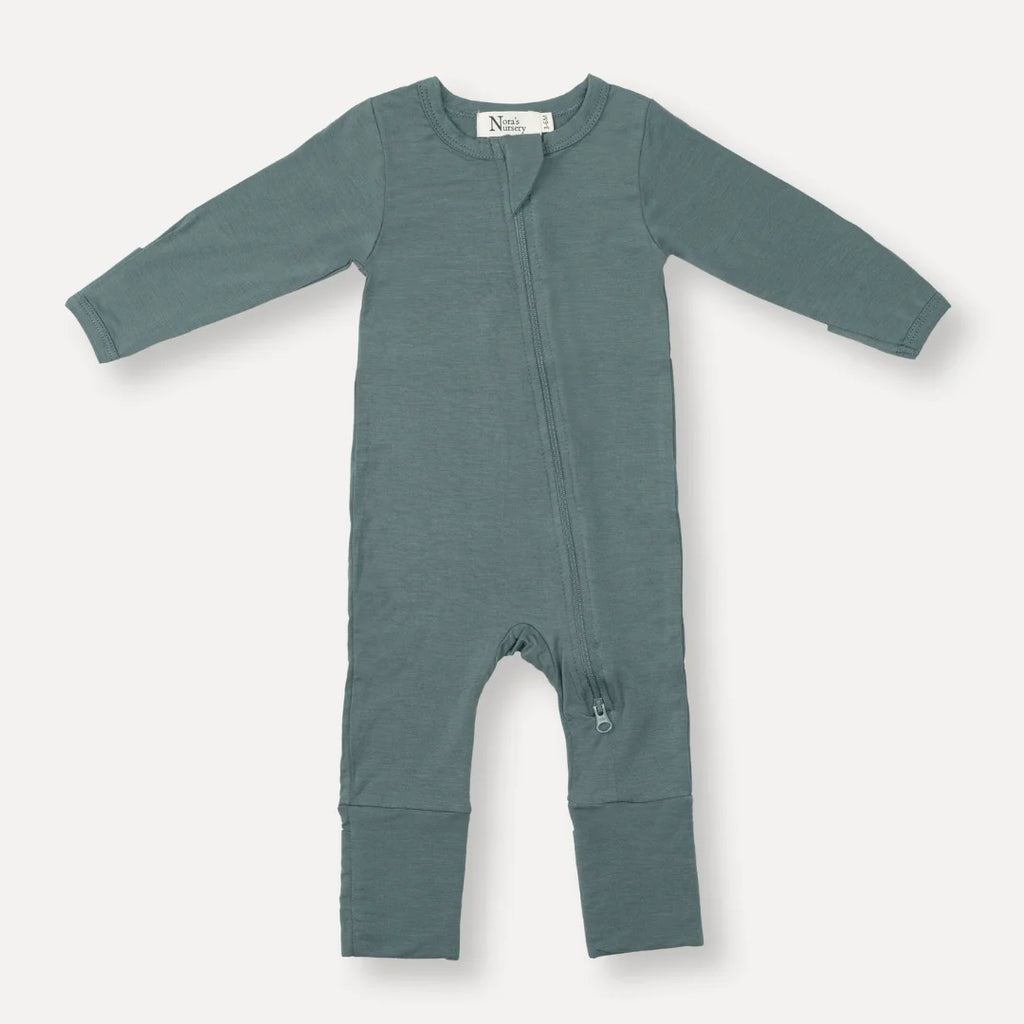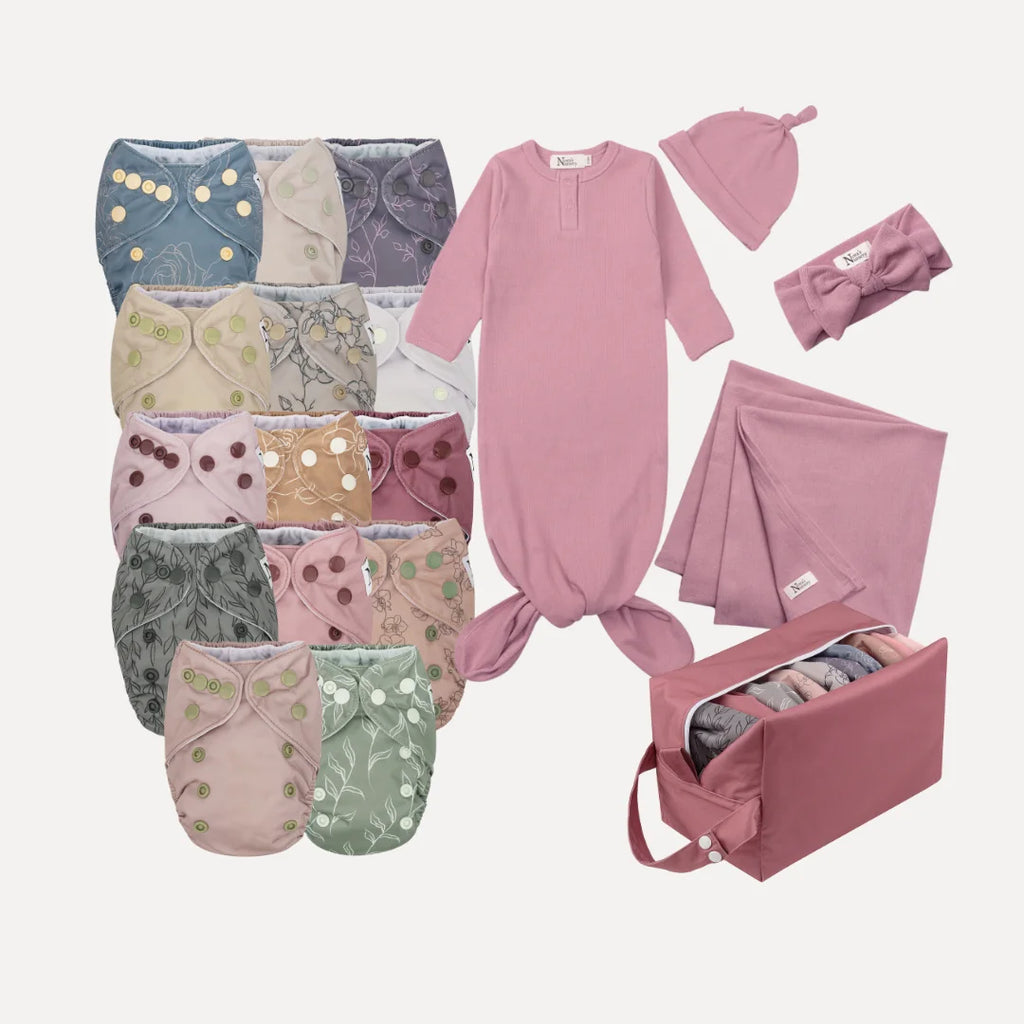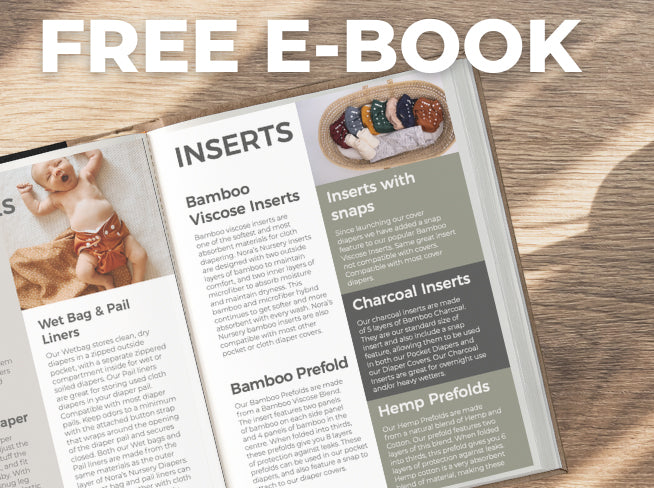Using cloth diapers for overnight periods is certainly possible. But longer sleeps naturally require a little extra protection. Overnight cloth diapers may leak if they become fully saturated. There is no need to look for special nighttime cloth diapers for overnight periods. To avoid overnight leaks, try adding more absorbency to the diapers you already have! Simply adding an extra insert or looking for a cloth diaper booster can get you all the extra absorbency you need overnight.
Best Overnight Cloth Diapers
If you are looking for the best overnight cloth diapers, look for the following:
- Cloth diapers with a snug fit that keep baby comfortable.
- Cloth diapers that can comfortably hold cloth diaper boosters or extra diaper inserts.
- Cloth diapers and inserts that are made of natural materials that absorb moisture, dry quickly, help regulate temperature, and are safe for baby’s delicate skin.
- Cloth diapers that wash well to avoid ammonia build-up and repelling issues. A cloth diaper that is not washed properly will inevitably lead to overnight leaks and even diaper rash.
- Cloth diapers that are affordable and accessible for your family, in a style that suits your needs. Finding cute colours and patterns is a bonus!
Double-up on Inserts to Increase Absorbency
To help your little one stay dry and sleep comfortably, double up on your inserts. Simply stuffing one insert into the diaper pocket and laying an additional insert on the inner liner will double your absorbency.
For little boys or belly sleepers, try adding a folded insert towards the front of the diaper to help absorb moisture. Little girls and back sleepers will need extra protection near the middle and the back of the diaper.
Newborns can wear cloth diapers for overnight periods as well. But keep in mind that newborns should be checked regularly if a diaper change is needed, even if using an extra insert. Newborns frequently have bowel movements during the night and generally need a change every few hours. Always change a soiled diaper to protect baby’s delicate, sensitive skin.
Inserts vs Boosters – what is the difference?
If you are struggling with overnight leaks or just want to ensure your baby has all the protection they need, you may consider using extra inserts or looking for a special cloth diaper booster insert. Let’s look at the differences and similarities between the two options.
Cloth diaper inserts are made from a variety of materials and blends. They come in all shapes and sizes. Inserts are generally provided with your pocket or hybrid cloth diaper sets. Many cloth diaper manufacturers offer sets of extra inserts to perfectly fit your cloth diapers. Extra inserts are a great way to increase absorbency when you double up.
Boosters are really no different than inserts. Boosters also come in many materials, blends, shapes and sizes. They are designed to ‘boost’ your absorbency. Boosters are often most commonly needed for all-in-one and fitted cloth diapers that do not have removable inserts.
Essentially - inserts and boosters serve the same purpose – they act as an extra piece to meet the absorbency needs you might not be getting with your regular cloth diaper or with just one insert. Since they serve the same function, you can choose what will work best for you based on the type of cloth diapers you use, your material preferences, and your size needs.
To increase the absorbency of your overnight cloth diapers, add an additional insert or a booster of the material and design of your choosing.
Ensure to choose the right boosters or inserts for overnight periods. Consider materials that absorb moisture while keeping baby comfortable. Bamboo fleece and other bamboo fabrics are popular options for nighttime as they have a high level of absorbency, they are soft, and quickly wick away moisture. Bamboo is breathable and thermal regulating, making it dry quickly while keeping your baby comfortable.
To build your extra cloth diaper insert supply, check out the ten pack of Bamboo Cloth Diaper Inserts from Nora’s Nursery. These inserts act as great cloth diaper booster inserts for overnight periods.
Washing Overnight Diapers
Having a good cloth diaper wash routine is especially important with overnight diapers. Check out Washing 101 to learn the basics on successfully washing your cloth diapers.
Because your overnight cloth diaper is naturally exposed to larger amounts of urine over longer periods of time, it is common for ammonia crystals to develop and create unpleasant odours. The diaper may become saturated, then dry, and become saturated again.
The ammonia odour is best described as the type that “burns your nose hairs''! It is normal for overnight cloth diapers to smell like urine, especially for older babies and toddlers. But it is important to tackle ammonia build-up immediately to avoid repelling issues and diaper rash. Try rinsing out your cloth diapers first thing in the morning to wash away urine. Soaking with a bit of washing soda or borax can also help rinse your diapers and neutralize odours.
Tips for Cloth Diapering at Night
- Ensure you have the right cloth diaper fit: No matter what you do, you will struggle with leaks if you do not have the right fit for your baby. Cloth diapers for overnight periods should fit snuggly without causing discomfort. If you notice leaks, adjust to a tighter setting, particularly around the thighs. For a snug fit, ensure that you can fit no more than one finger between the diaper and the thigh, and no more than two fingers between the top of the diaper and baby’s belly. Nora’s Nursery offers a detailed guide on sizing your diapers. Check out Avoid Leaks – Get the Perfect Fit.
-
Ensure your cloth diapers are not repelling. Are you still struggling with leaks, even after adding extra inserts and double checking your cloth diaper fit? Residue build-up on your diapers will cause them to repel and inevitably leak. Do an absorbency test by laying your clean diapers flat and pouring a small amount of water on them. Apply a bit of pressure. The inserts should absorb the water. If the water ‘wicks’ away and does not absorb into the insert, you likely have a residue build-up problem. To tackle build-up and repelling, you may want to strip your cloth diapers and start over. Tips for preventing build-up and repelling, and stripping your cloth diapers are found in Washing 101 and Stripping and Restoring your Cloth Diapers.
For more information on washing cloth diapers
To continue reading the blog scroll down
watch the video below.
- Check where your absorbency is needed most. After you use your cloth diaper overnight, check to see if the entire diaper absorbency is maxed out or if there are areas that remain dry. If your whole diaper is maxed out, add extra diaper inserts for overnight stretches. If you notice parts of the diaper remain dry, then you know where to adjust your fit and focus extra absorbency needs specifically where baby pees.
It's important to also note that prepping for different insert materials may require more washes for them to reach full absorbency. The amount of time it takes for your inserts to reach adequate absorption is sensitive to detergent, water hardness levels, and the your wash routine!
Want to learn more about our inserts, what they are best for, and their absorbency levels? Check out our Insert Absorbency Chart!
So go ahead – if you haven’t already, try your cloth diaper overnight. If you are struggling with leaks, look for extra cloth diaper inserts for overnight stretches. Try our tips and check out our other ‘How-To’ blogs to help with all your cloth diapering needs.
Want to learn more? Check out our tiktok!
@norasnursery Test Your Absorbency! 🧺 #norasnursery #clothdiapers #absorbency #test ♬ original sound - norasnursery
@norasnursery Replying to @thehydratedmermaid tackling night time leaks! #clothdiapers #norasnursery #gettingstarted #clothdiaperlaundry #clothhack ♬ original sound - norasnursery


